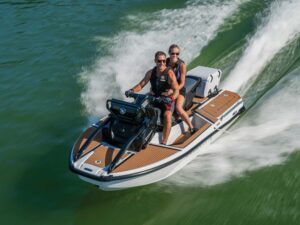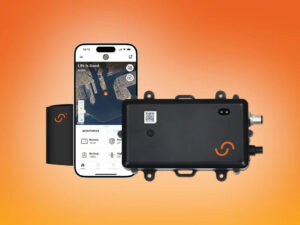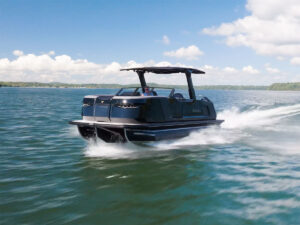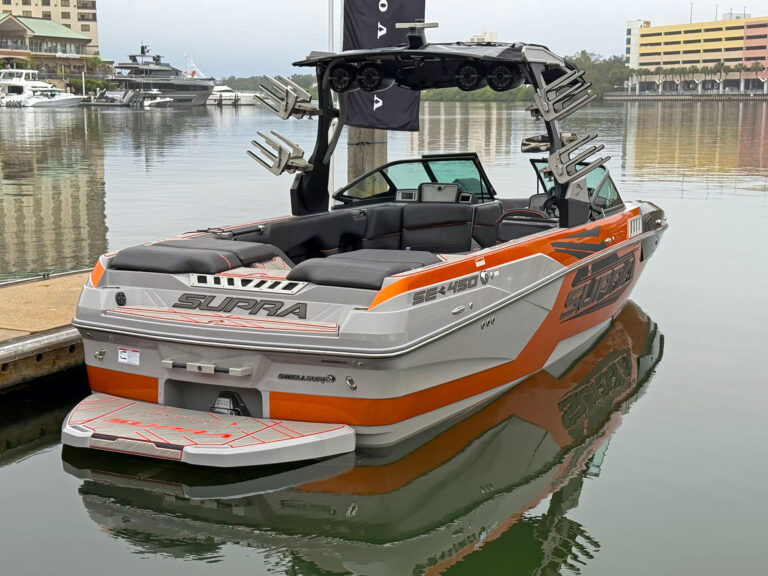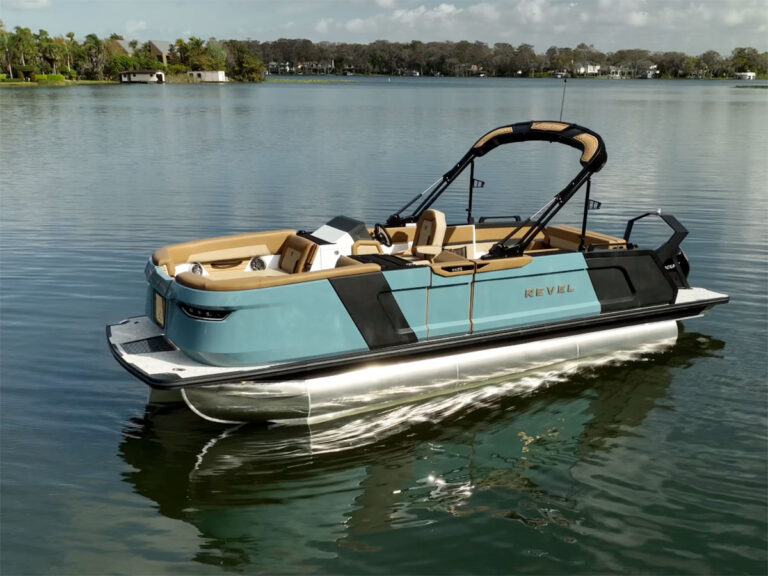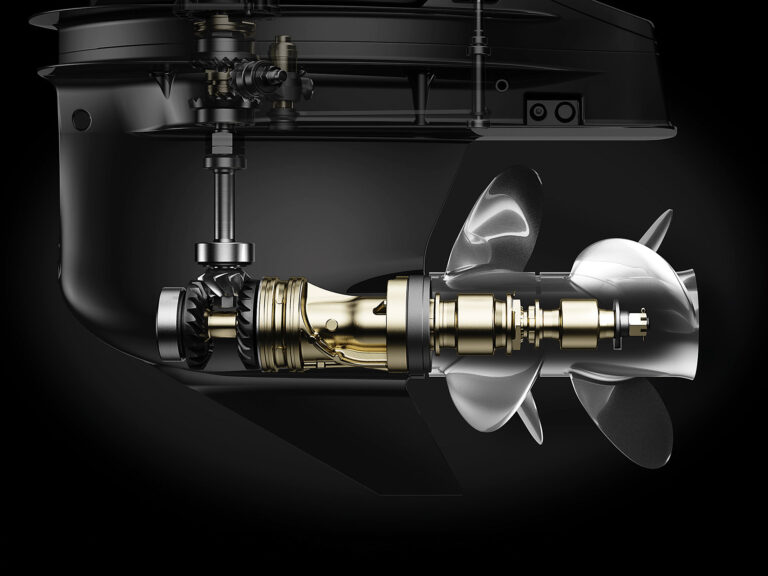
Mercury Marine has been teasing its Avator electric outboard for more than a year, and the Avator 7.5e model made its public debut in January at the 2023 Consumer Electronics Show (CES). However, it will not be available for sale until later this year, likely packaged with the new Veer X13 compact fishing boat.
The first in a series of Avator electric motors Mercury will introduce in 2023, the Avator 7.5e is distinguished by its removable battery pack. Mercury says the Avator 7.5e generates 750 watts of power and offers performance equivalent to a Mercury 3.5 hp gas outboard. The 48-volt, 1 kWh lithium battery, designed with Brunswick partner Mastervolt, uses transverse flux technology. Mercury says the hydrodynamics and propeller design foster efficiency, and the outboard generates high torque with little effort to maximize battery life and range.
“The Avator 7.5e is much more than just an outboard,” says Tim Reid, Mercury Marine vice president of product development and engineering. “We created an entire propulsion system, fully integrated from the advanced controls, props and digital gauges to an all-new mobile app. Every aspect was designed with the same attention to quality, durability and reliability as all Mercury products. We’re confident the Avator 7.5e outboard will deliver a superior boating experience for boaters powering small vessels with electric propulsion.”
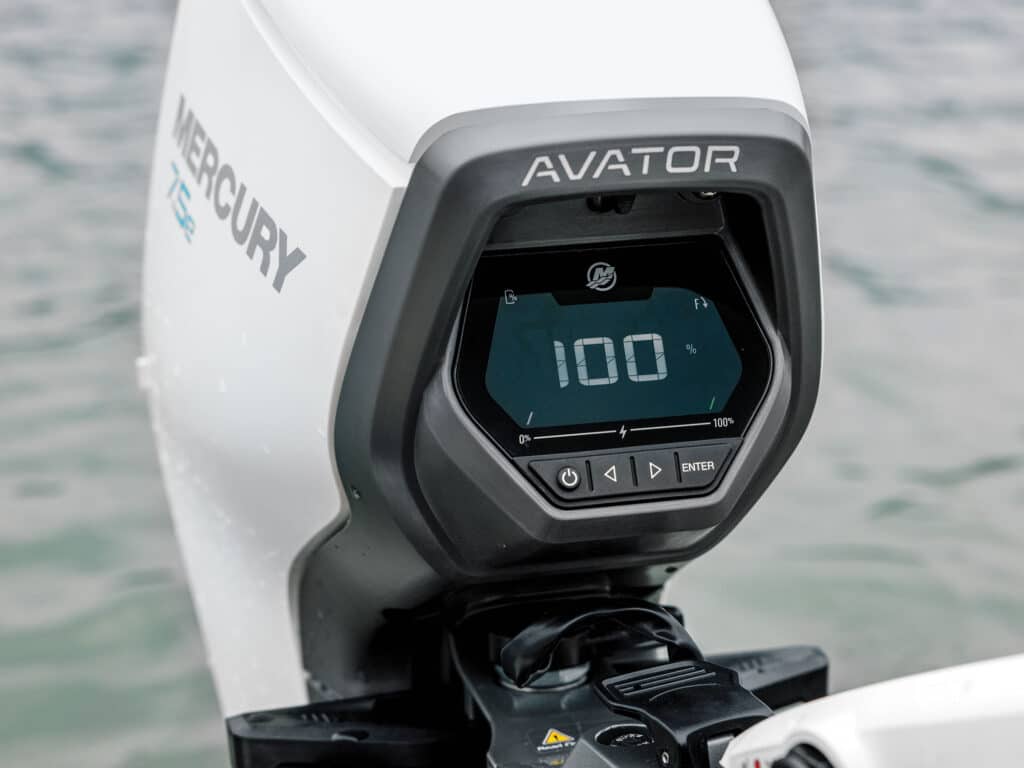
The Avator 7.5e comes in 15-, 20- and 25-inch lengths. The 15-inch model weighs 43 pounds without the battery, about 5 pounds more than Merc’s 3.5 hp FourStroke. The battery weighs about 15 pounds. The drive removes from the transom bracket at the steering pivot, so you could leave the bracket and tote away the rest of the motor, which then weighs just 37 pounds. This also makes installation easy; screw on the transom bracket, attach the drive, then drop in the battery.
The 7.5e model can only be powered by its built-in battery. Extending range requires carrying a second battery pack, which is also easy to change. Mercury is not able to estimate range due to all of the obvious factors that impact battery efficiency, including wind, current, load and ambient temperature. The battery must be removed from the outboard for charging. A 110W charger and a 230W charger—both of which plug into standard house current—are available. Charging times for a depleted battery is stated as 10 hours with the 130W charger and 4.5 hours at 230W. The onboard display offers a lot of information, including battery level as a percentage or on a scale, battery estimated time and distance, power output in kilowatts, vessel speed, a moving propeller indicator, and alerts and faults. The display can also be used to change throttle direction for hand preference, since shifting and throttle are controlled in the tiller handle grip. Maintenance is limited to checking a sacrificial anode, greasing the prop shaft, rinsing off salt, and maintaining battery state of charge.
Mercury is not ready to reveal pricing for the Avator 7.5e. At CES, Mercury also displayed Avator 20e and 35e models, which we assume will produce 2.0 kW and 3.5 kW of power if the naming nomenclature is consistent. If thrust stays consistent, that makes the 35e model equivalent to about 14 hp. The Avator 20e and 35e models use remote batteries.
Brunswick will release more information on Avator outboards at mercurymarine.com/avator throughout the coming year. Meanwhile, we’ll be testing the Avator on the water soon and reporting back to you. Stay tuned.

